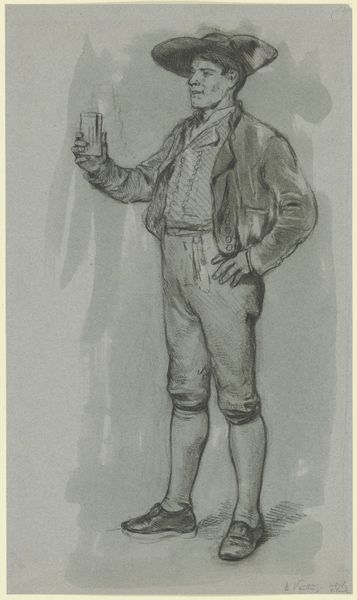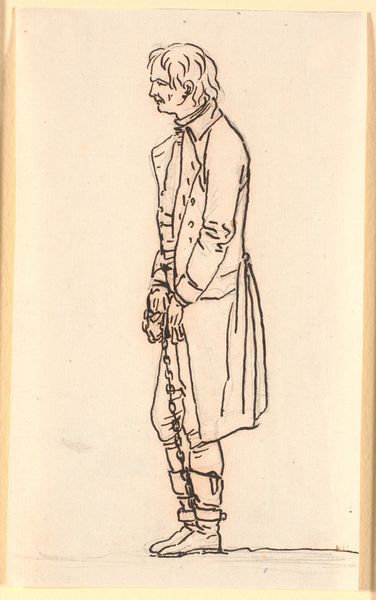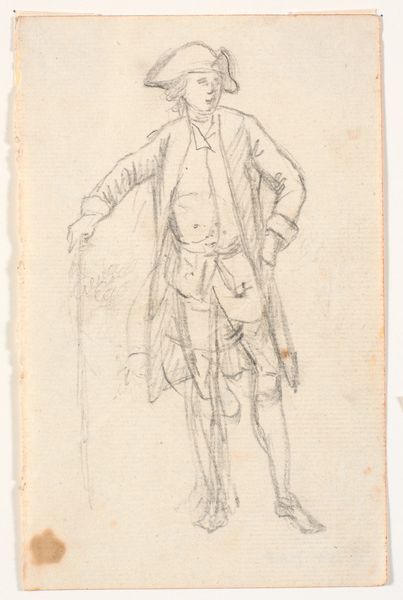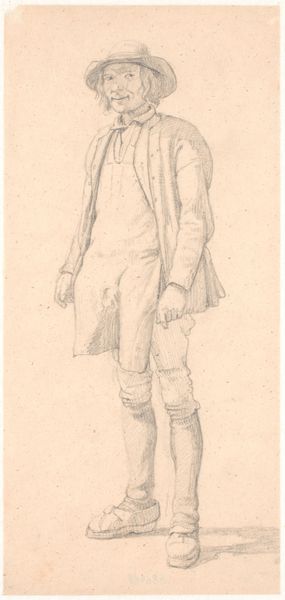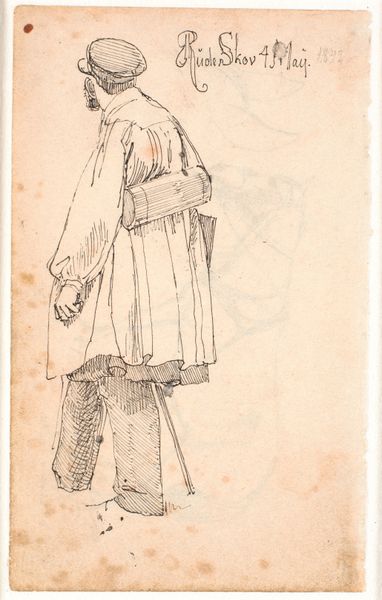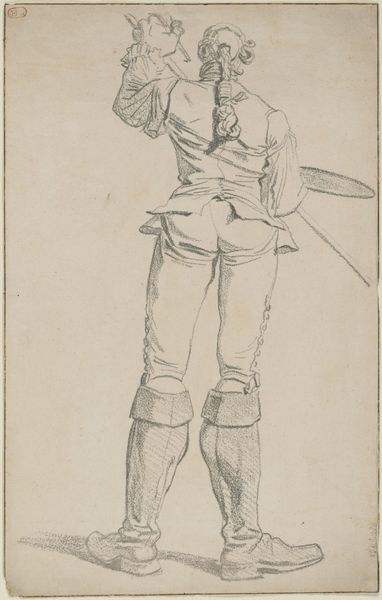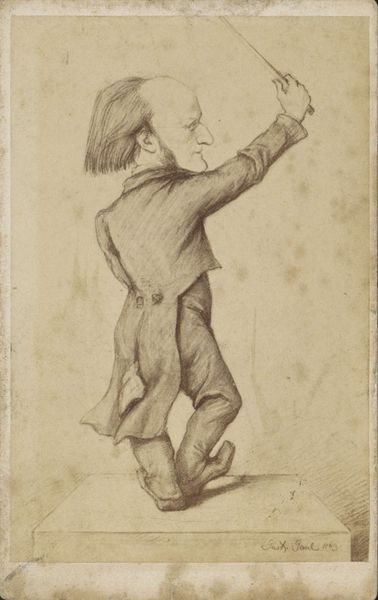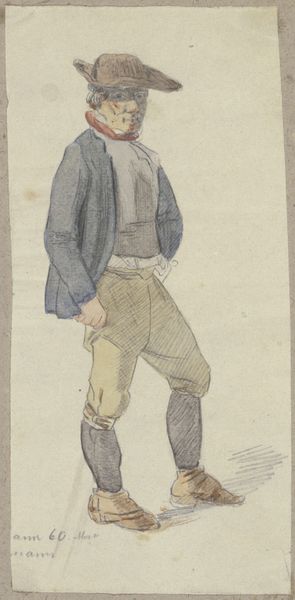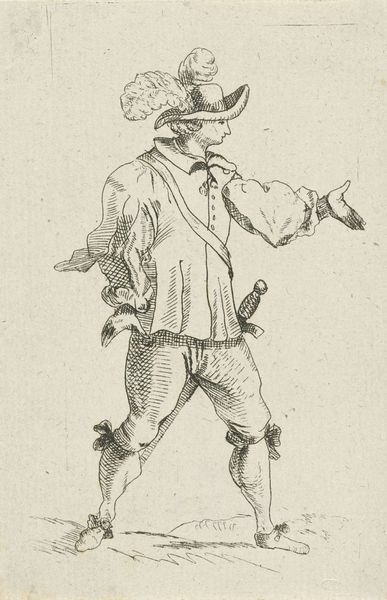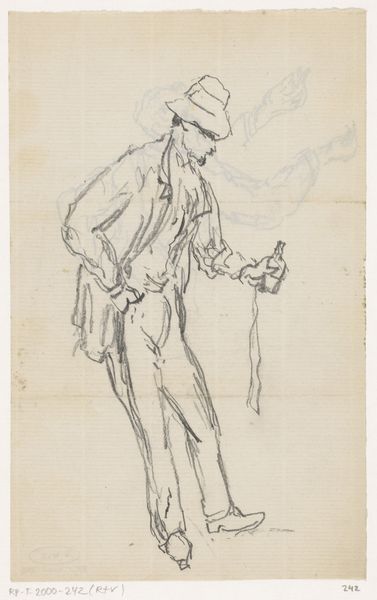
En stående dreng med en stor hue på hovedet og vanter på de udrakte hænder 1743 - 1809
0:00
0:00
Dimensions: 112 mm (height) x 64 mm (width) (bladmaal)
Curator: What a curious drawing. It's called "A Standing Boy with a Large Hat on His Head and Mittens on His Outstretched Hands" by Nicolai Abildgaard. The work which resides at the SMK, was made sometime between 1743 and 1809, utilizing a drawing medium on toned paper. Editor: My first thought is: theatrical. He could be a character from commedia dell'arte, about to deliver a dramatic monologue, hands open as if pleading. There's a vulnerable yet performative quality to him. Curator: Absolutely. Abildgaard was very interested in theatre, particularly its capacity for dramatic expression. And of course we have to remember that public life itself was being performed. The drawing highlights a time of revolution, both cultural and political and these are intertwined of course. Consider the period--ideas were rapidly transforming across Europe, reshaping the roles people played within society. Editor: The exaggerated features support that—especially the hat. Hats often carry so much symbolic weight—power, status, even hidden thoughts. And these very large gloves further emphasize the awkward innocence of youth, as if this character, as if he has borrowed or received clothes too big for his body. Is it fair to also associate that hat with jester or fool symbolism as well? Curator: It’s entirely valid. Looking through the lens of Romanticism, the focus on the individual, with all his quirks and eccentricities, becomes very prominent in society. Also note, that the sketch-like quality provides a sense of spontaneity and captures, if you will, a moment of fleeting inspiration. This speaks to the artistic license to imagine alternative versions of life beyond social hierarchies and courtly grandeur. Editor: Exactly. Beyond just fashion of the time. His posture suggests that the artist has something specific in mind when he captured his form: it is as if there is another sketch layered on top. Perhaps Abildgaard wants this person to be recognized or to evoke another archetype to which people would respond in their unconscious. Curator: And these sketchbooks – personal repositories of ideas – become tools that help inform and transform social awareness. They offered people new perspectives on everyday things as they became ready to challenge societal roles. Editor: Indeed. I find it powerful how this small sketch invites so many questions. It reveals how clothing and posture create symbols of both individual yearning and wider shifts within social expression.
Comments
No comments
Be the first to comment and join the conversation on the ultimate creative platform.
